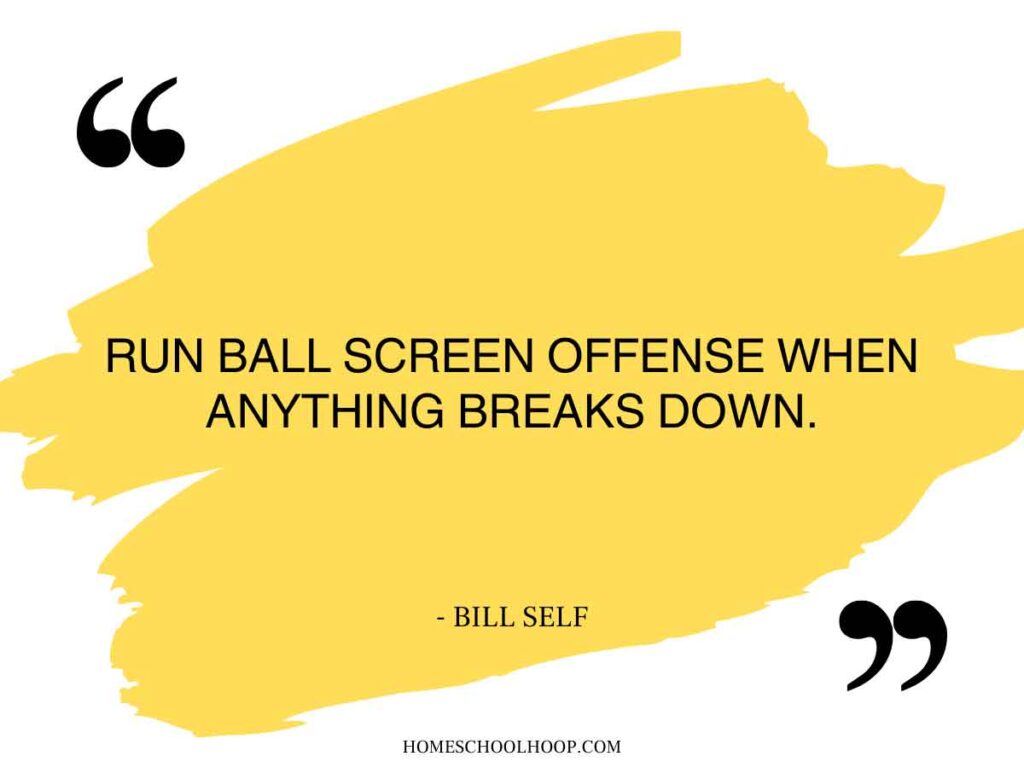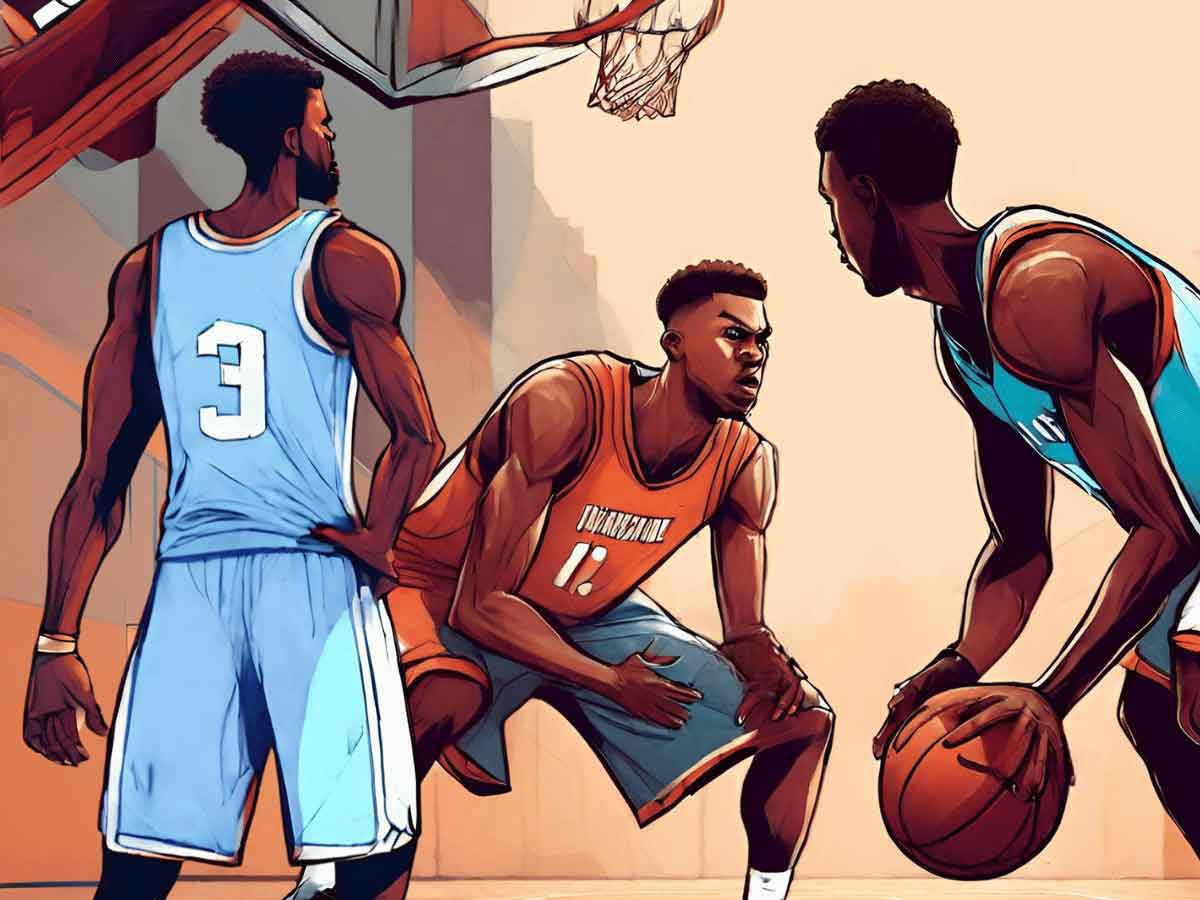The ball screen is a valuable strategy on the offense end of the basketball court. This tactical maneuver, where a player sets a screen for a teammate with the ball, disrupts the defense and creates scoring opportunities.
Key Takeaways:
- A ball screen is when an offensive player sets a screen for a teammate handling the ball.
- The goal of a ball screen is to create space and scoring opportunities for the ball-handler by blocking or delaying their defender.
- Success with ball screens comes from the offensive players moving in sync with the right timing and place on the court.
Ball screens are a regular part of today’s basketball. Whether you’re a new fan or a regular player looking to refine your skills, understanding how they work is essential. This guide simplifies the ball screen concept, explaining how to perform them, their different forms, and how they can lead to scoring. Plus, for those on defense, it includes tips on how to effectively counter them.
What is a Ball Screen in Basketball?
A ball screen is a basketball play where one player (the screener) uses their body to block a defender to create space and opportunities for a teammate with the ball (the ball-handler).
Ball screens, which are also commonly called on-ball screens, are different from off-ball screens, which happen away from the ball.
Key Elements of a Ball Screen:
- The Screener: Positions themselves in the path of the defender.
- The Ball-Handler: Uses the screen to move past the defense.
- The Screener’s Defender: Tasked with helping their defending teammate get around the screen.
- The Ball-Handler’s Defender: Has to navigate around the screen to stay with the ball-handler.

Rules for Setting a Legal Ball Screen
To make sure a ball screen is legal, offensive players must:
- Stay Still: The screener must hold their position when setting the screen. Leaning or shifting while setting a screen can result in an offensive foul for a moving screen.
- Give the Defender Time: The screener must set the screen in a way that gives the defender a fair chance to avoid running into it. This means not suddenly stepping out without warning or running up to them to initiate contact.
An offensive team has to follow these two rules any time they execute a screen in basketball. Not doing so can result in an illegal screen foul, which gives the ball to the opposing team and might even result in free throws if the fouled team is in the bonus.
Guidelines for a Successful Ball Screen
While the ball screen looks simple, pulling it off successfully requires offensive players to be on their game in terms of:
- Communication: The screener and the ball-handler need to talk or motion to each other to make sure they’re on the same page.
- Positioning: The screener must position themselves in a way that creates the most space for the ball-handler.
- Timing: The ball-handler must wait until the screener is set before making their move.
- Execution: After the screen, the screener can “roll” toward the basket (pick and roll) or “pop” out for a shot (pick and pop).
Types of Ball Screens
Ball screens come in various forms, offering different ways to break through the defense. Let’s break down the common types:
High Screen
This is when a ball screen is set near the top of the key, often past the three-point line. It’s great for creating driving lanes to the basket. When defenders leave their players to help on the ball-handler, it opens up chances for long-range shooting opportunities.
Drag Screen
The drag screen in basketball is used in secondary transition offense, often shortly after as the ball crosses half-court. The screener runs up to set a quick screen for the ball-handler. With the defense still getting set, the drag screen can catch them off guard to create open shots and driving lanes.
Step Up Screen
This screen is executed by a larger post player. They step up beyond the three-point line to set the ball screen, allowing the guard to attack downhill toward the rim.
Pick and Roll vs. Pick and Pop
Every type of ball screen sets the stage for two potential outcomes: a pick and roll or a pick and pop. These involve action by the screener after the ball-handler has come off their screen.
With a pick and roll, the screener rolls toward the basket looking for a pass near the rim. In the pick and pop, the screener moves to an open space, usually away from the basket to get a pass for a jump shot.
How to Effectiveness Use Ball Screens
Pulling off a quality ball screen takes the right setup, positioning, timing, and reads by both the ball-handler and screener. Here are some tips for setting and utilizing ball screens to create scoring opportunities.
Setting Up Ball Screens
The success of a ball screen starts with its setup:
- Being on the Same Page: The screener and ball handler need to communicate their intentions, ideally without tipping off the defense that the ball screen is coming.
- Angle of the Screen: The angle of the screen greatly determines whether it adequately blocks or slows down the ball handler’s defender. The screener needs to position themselves in a way that they force the defender into a decision – go over or under the screen.
Positioning and Timing
Getting into proper positioning and the timing of the ball screening action are crucial:
- Screener’s Action: The screener should set a roughly hip-width base and remain stationary to set a legal ball screen.
- Ball-Handler’s Movement: The ball-handler has to wait until the screen is set before making their move.
Reading the Defense
On-ball screens work because they put the defense into challenging situations. You can maximize their effectiveness by reading how the defense plays the screen and adjusting accordingly.
- Drive, Shoot, or Pass: The ball-handler should watch their defender to see whether they go over or under the screen, or whether they switch assignments with a teammate. This will determine whether the ball-handler should drive, shoot, or pass.
- Roll or Pop: After setting the screen, the screener should watch their defender to determine their next move. If the defender is hedging to help on the ball-handler, they can roll toward the basket for a pass. If they stay back behind the screen, they can pop out for an outside shot.
Common Mistakes to Ball Screens
There are a handful of common pitfalls that can impact the effectiveness of ball screens:
- Moving Screens: The screener gets over-enthusiastic for blocking the defender and leans or shifts at the last second to ensure they make contact, leading to a foul.
- Poor Timing: Either the screener or the ball-handler acts too early or too late, leading to fouls or an ineffective screen that’s easy for the defense to navigate.
- Predictability: Using the same ball screens repeatedly allows the defense to get into a rhythm.
- Playing the Play: Going through the motions of a ball screen without reading and adjusting to the defense can leave valuable scoring opportunities on the table.

Defending Against Ball Screens
You can’t give half-effort when defending against ball screens. Good offensive teams will burn you unless you have counters in place and communicate well with your teammates.
Regular drills with ball screen scenarios can improve a team’s defensive decision-making, communication, and reaction times. Also, scouting so you know the tendencies of opponents will help anticipate ball screens.
All in all, defenses need to be ready to adjust strategies based on the team they’re playing. Here are the basics to effectively countering the common on-ball screen.
Basic Ball Screen Defensive Strategies
There are three primary strategies defenses use to counteract a ball screen: switch, hedge, and trap.
- Switch: This is when the defenders switch assignments as the screen is set. So the ball-handler’s defender takes the screener, and the screener’s defender steps up to take the ball-handler. This can be an effective way to shut down a ball screen, but the risk is that it can create mismatches.
- Hedge: Hedging in basketball is when the screener’s defender momentarily steps out to confront the ball-handler as they come off the screen, then quickly recovers back to their original player. This can be effective when the screener’s defender has the agility to confront and recover quickly, or when the screener isn’t a strong offensive threat.
- Trap: This is when both defenders converge on the ball-handler as they come off the screen. This is a more aggressive approach that can cause less experienced ball-handlers to feel pressured and turn the ball over. Because it leaves the screener unguarded, the rest of the team needs to be ready to rotate and cover.
Importance of Communication and Quick Decision-Making
Successful defense against ball screens hinges on:
- Communication: Defenders have to constantly talk to each other, calling out screens and talking out whether to switch, hedge, or trap.
- Quick Decision-Making: Decisions must be made in a split second. Hesitating or playing timid will lead to the offense having an advantage.
- Teamwork: Defense against a ball screen is a team effort and everyone needs to be ready to help.
FAQs
What is a ball screen?
A ball screen is a basketball play where one player sets a screen for a teammate who has the ball. The screen blocks or delays the defender, creating space for the player with the ball to shoot, pass, or drive.
What is the difference between a pick and a ball screen?
A pick and a ball screen refer to the same action. “Pick” is another term for a screen. However, a ball screen specifically involves the player with the ball, whereas a pick can be set for any player, whether they have the ball or not.
Are there any penalties for illegal ball screens?
Yes, illegal ball screens can result in penalties. If the screener moves and does not maintain a stationary position when setting a screen, or if they do not allow the defender a fair chance to avoid the screen, referees can call an offensive foul. This results in a turnover, giving possession to the opposing team.
SHARE YOUR MEMORY
Today, you learned about the ball screen in basketball.
So we want to know: What’s a memorable moment or game where a ball screen made a significant impact? What happened, and why did it stand out to you?
Let us know in the comments.


